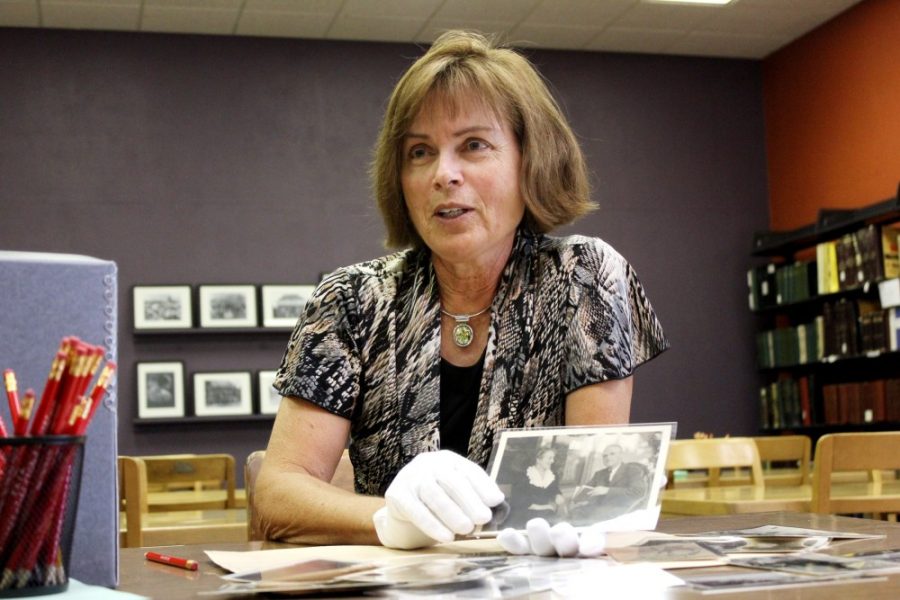A UA professor is working on a book based on an immigrant’s diary and her transcription of the material over the last three years.
Judy Temple, a professor of Gender and Women’s Studies and English, has been working on transcribing the diary of Mary Eileen Murphy Walsh, also known as “Mim,” since 2010. Walsh came to Arizona from Ireland in the 1900s.
“I like long journals,” Temple said. “There’s a real difference between someone who writes a journal about a trip and someone who decides to write for the rest of her life.”
The multi-volume diary is located in the Arizona Historical Society’s Library and Archives collection and was sealed for 25 years after Walsh’s death to protect the privacy of its subjects, according to Laura Hoff, an archivist at the Arizona Historical Society.
Temple was at the archiving library every day for several hours while she was transcribing the diary, according to Hoff.
“She’s very open about sharing details that she finds,” Hoff said. “We’ve been able to kind of follow Mim’s story through [Temple]. … She’s so enthusiastic about it that it’s kind of infectious.”
When asked why she decided to undertake the project, her answer was simple.
“Who else would do it?” she asked. Temple said she decided to tell Walsh’s story because it reveals the history of the times and provides insight into an immigrant’s experience.
Walsh came to America because her husband was diagnosed with tuberculosis. The first state they lived in was California, which has a dry climate they hoped would help his cough, Temple said.
Walsh provided a new perspective on the social classes of the time by writing about the wealthy people she and her husband spent time with. Walsh and her husband were not wealthy, which resulted in an “outsider-insider” perspective, Temple said.
The project also explores subjects such as Tucson history, marriage, immigration and issues women face in their lives, said Monica Casper, the head of the UA’s Gender and Women’s Studies Department, in an email.
“As a specialist in women’s literature and oral history, [Temple] has spent her career finding and revealing women’s voices,” Casper said. “She teaches writings by and about women authors — some of them quite prominent — while also looking at ordinary women’s writing as a lens to social life.”
Temple is also bringing students from her Gender and Women’s Studies course students into her work, allowing them to read the diary in two-year segments. The students will then use the segments to put together the pieces of Walsh’s life while analyzing content.
Her students have been most surprised by the amount of socializing and drinking in that era, Temple said. They were also interested in the advancements in technology, such as the invention of the color television.
“They thought it was just fascinating,” Temple said.
One of the challenges Temple has faced in the process was deciphering the words written in Walsh’s tiny print. Temple said she also had to figure out family relationships and major events in Tucson history that Walsh referenced.
“It’s kind of like the ‘History Detectives,’ but not as glamorous,” Temple said.
Temple has become so immersed in this project that she said she’d like to use an award she received from the Gender and Women’s Studies Department to visit Walsh’s hometown.
“I’m very much kind of in her world, wondering what things she knew,” Temple said. “If something was published in 1935, I go, ‘Oh, I wonder if she knew about that.’”
– Follow Maggie Driver @Maggie_Driver









